Katzhagen modeling department
RhB ABe 8/12 3501 "Allegra" - Willem Jan Holsboer
About the Maerklin/LGB serial model's potentials
Electrical and mechanical issues
Below you can find some hints on improving more or less suboptimal solutions around the model's electrical configuration.
Furthermore, remedy is provided for a capital production fault with some of the tractive units.
Illumination of the destination boards
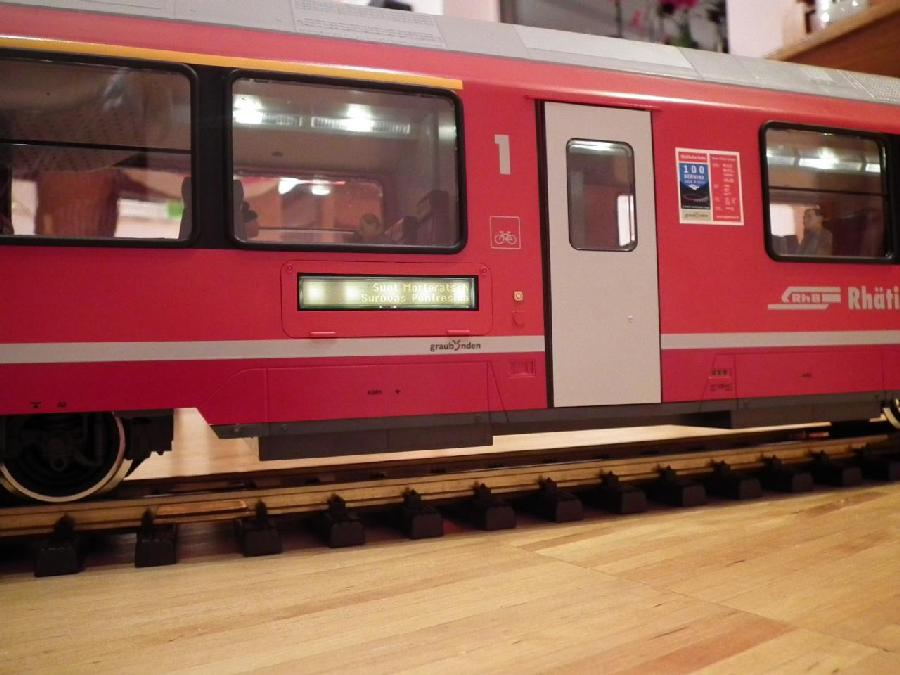
Given the original illumination's appearance, the term "dot matrix display" got a completely new meaning... This was definitely a no-go !
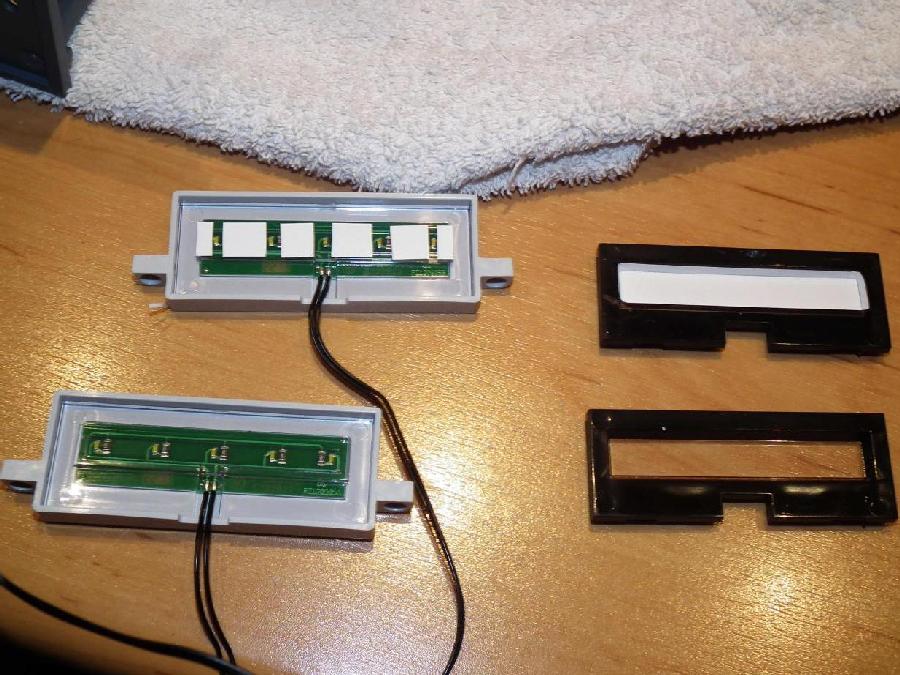
A first attempt to remedy the problem by diffusion failed miserably.
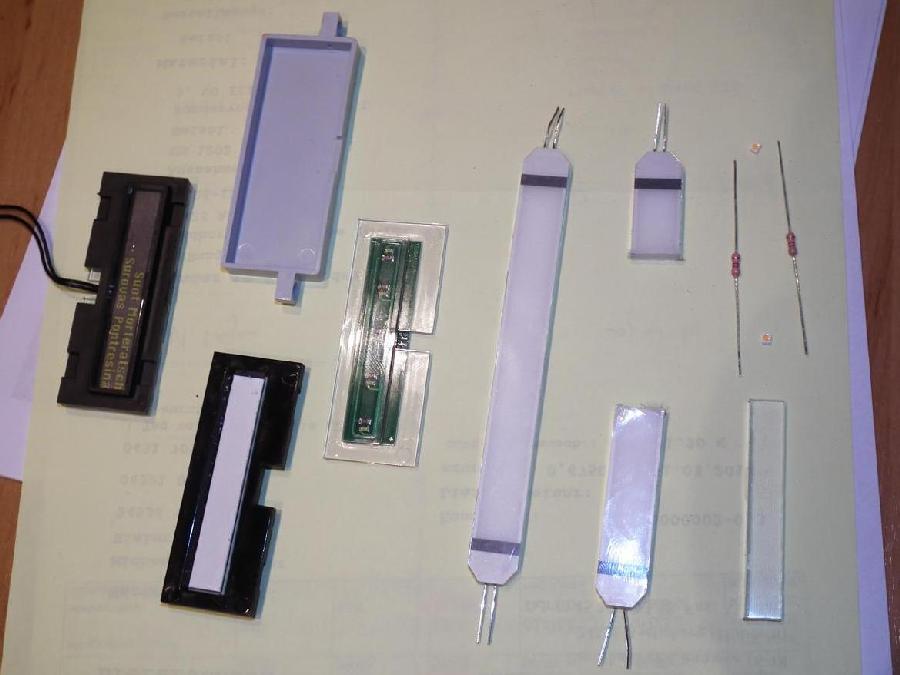
The problem was eradicated by replacing the original illumination with a LED background lighting. The latter was cut to size and equipped with new LEDs.
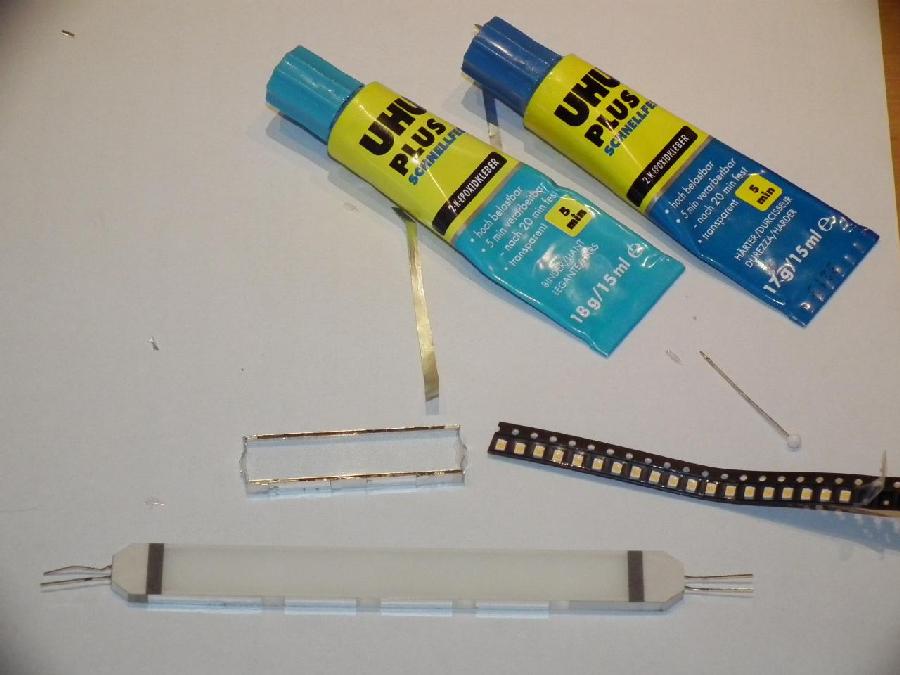
The SMD LEDs were fixed at the clear plastic blocks' sides using a clear 2-C glue. The same glue is also used to reseal the open edges with aluminum foil.
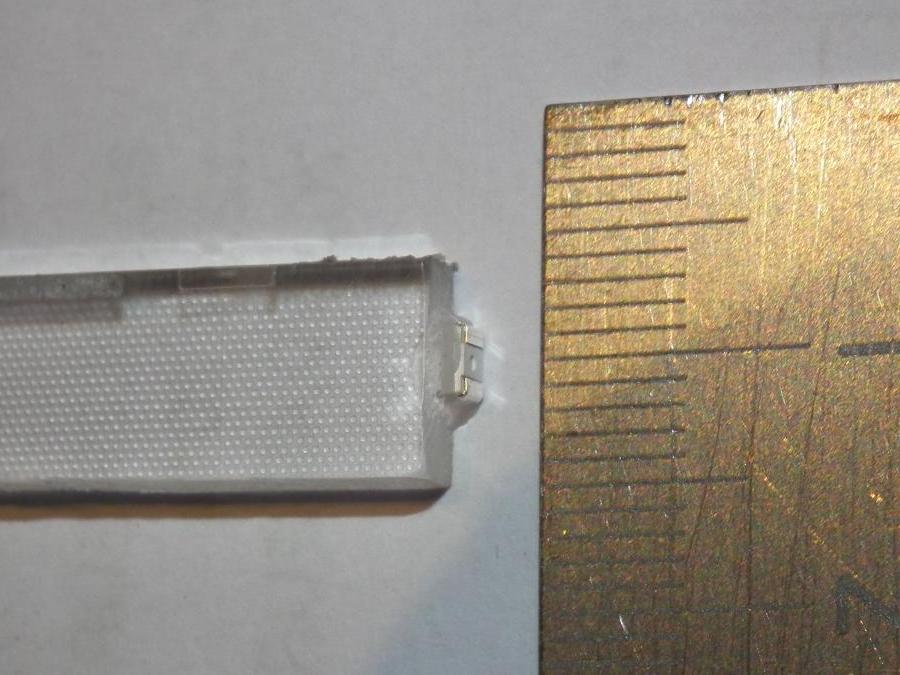
A bit of patience and pair of tweezers is quite helpful...
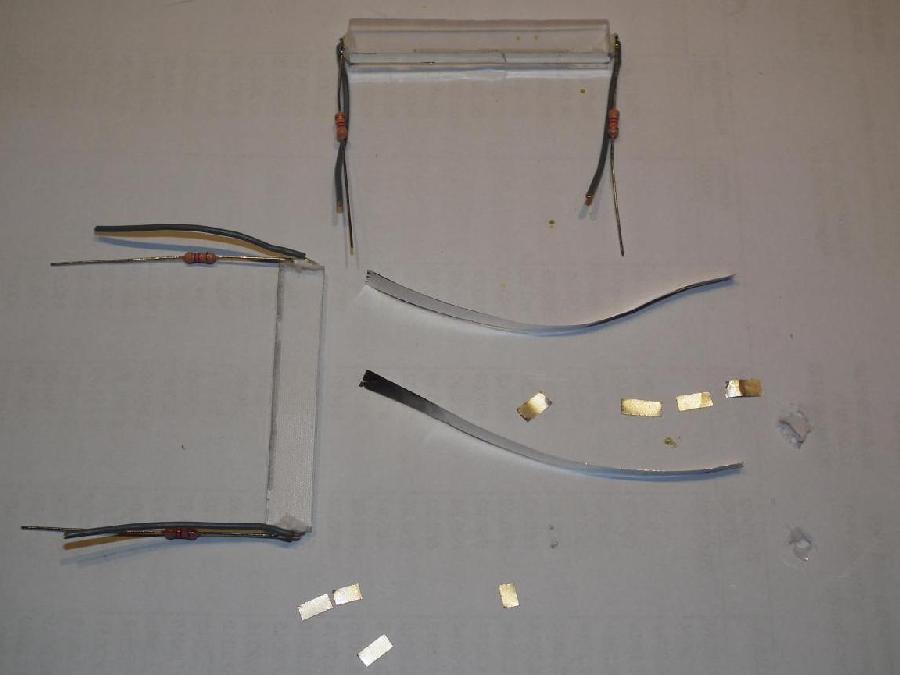
The LEDs have been equipped with 4k7 series resistors and leads, the background lighting is prepared to be resealed with narrow stripes of aluminum foil.
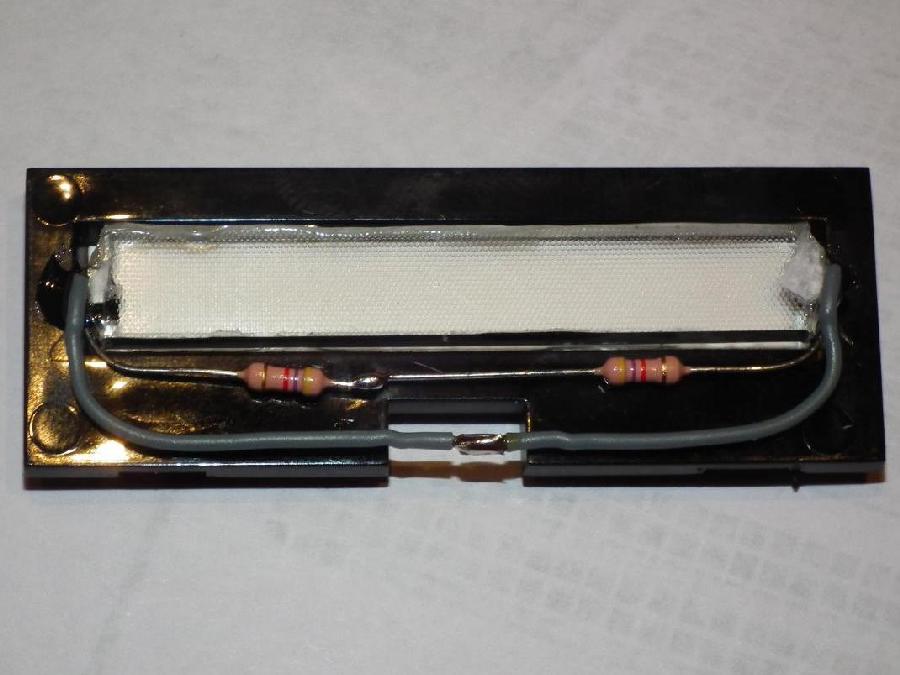
Background lighting inserted into a destination board.

The front destionation boards require some severe work in this connection. The tractive unit's ceiling needs to be dismounted to access the displays and the plate needs to be cut to size to fit into the frame of the display's housing - otherwise there were not enough space for the new illumination.
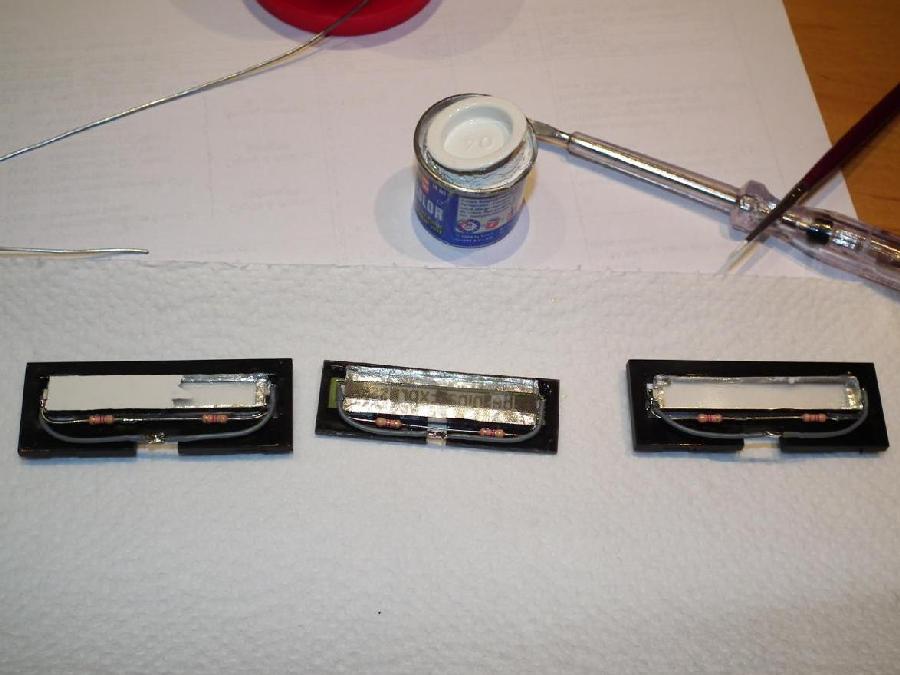
Concluding the clear plastic blocks' rear sides get a coat of white paint as a replacement for the white film which gets lost when processing the parts.
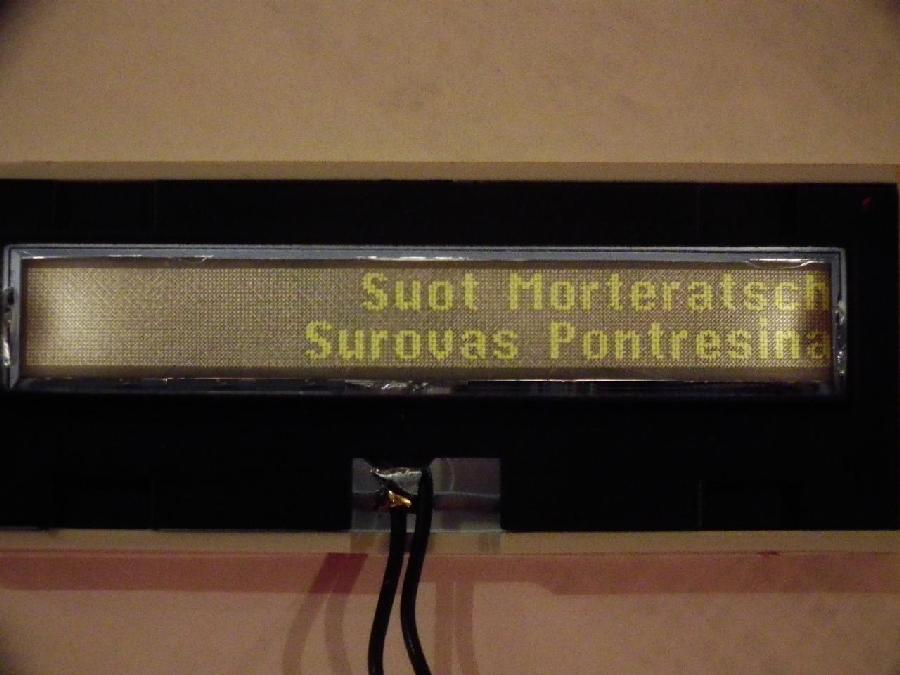
The result speaks for itself - dot illu ex...
Dashboard and driver cabin illumination
For analogue operations only !
Both the dashboard's and the driver cab's illumination do not work in analogue mode, neither with the Maerklin nor with the Massoth XLS-M1 decoder. But there is remedy in case of running the Allegra in analogue mode only.
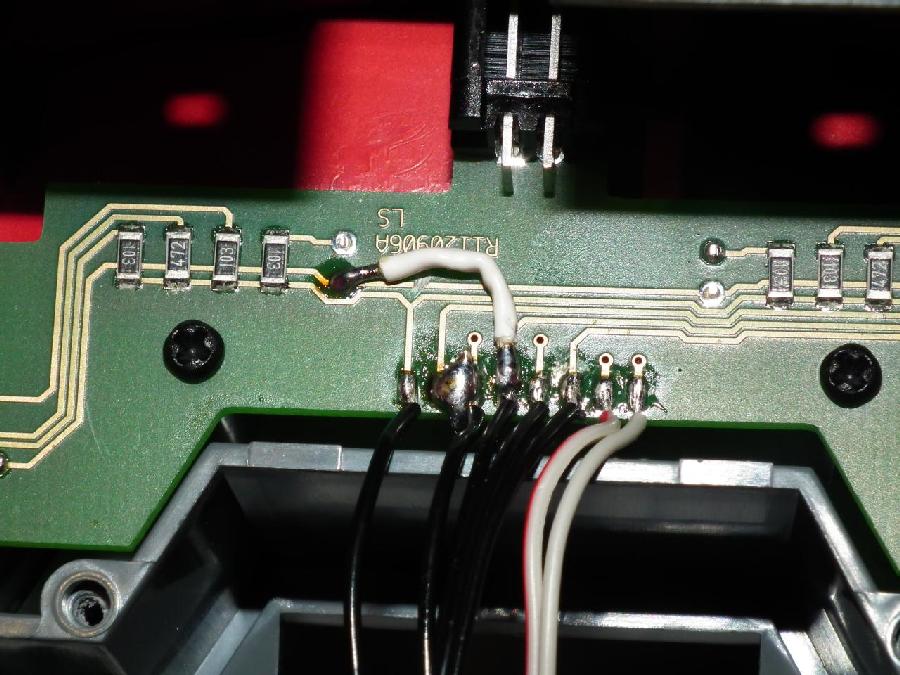
A few simple modifications need to be applied to the boards below the dashbaords:
- remove the 2nd cable on the left and insulate its open end
- Establish a solder bridge between the 2nd and 3rd lead
- interrupt the circuit path below the white cable as shown in the picture
- establish a bridge (white cable) as shown in the picture
Power is now provided to the dashboard illumination via the lower headlights power.

To enable the driver cab's illu in analogue mode, the related cable of the four-pole plug at the board's edge needs to be cut (pin 1, it's at the board's outer edge). Connect this cable to the the upper front light's cable (pin 3).
Show case mode and powerless track sections...
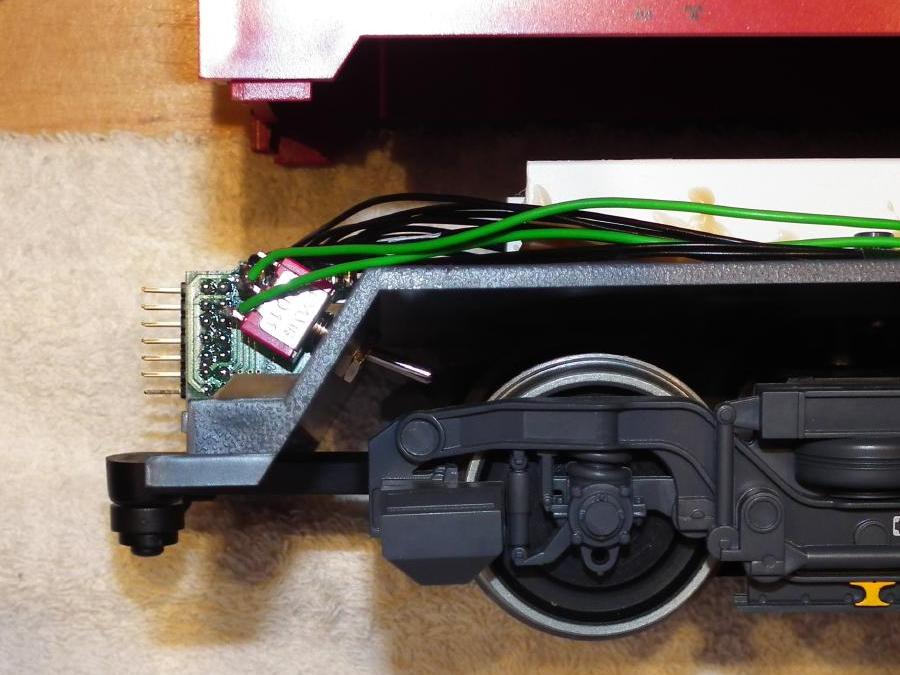
In case you intend to illuminate the train on a track in your show case... you will run into problems if the your track's voltage exceeds 6V since the train would speed off then.
Little switches, mounted almost invisible above the tractive units' rear bogies provide simple remedy. Just interrupt one of the motor cables (the outer ones on the black 4-pole STOKO plugs) and connect the now open ends to the switch.
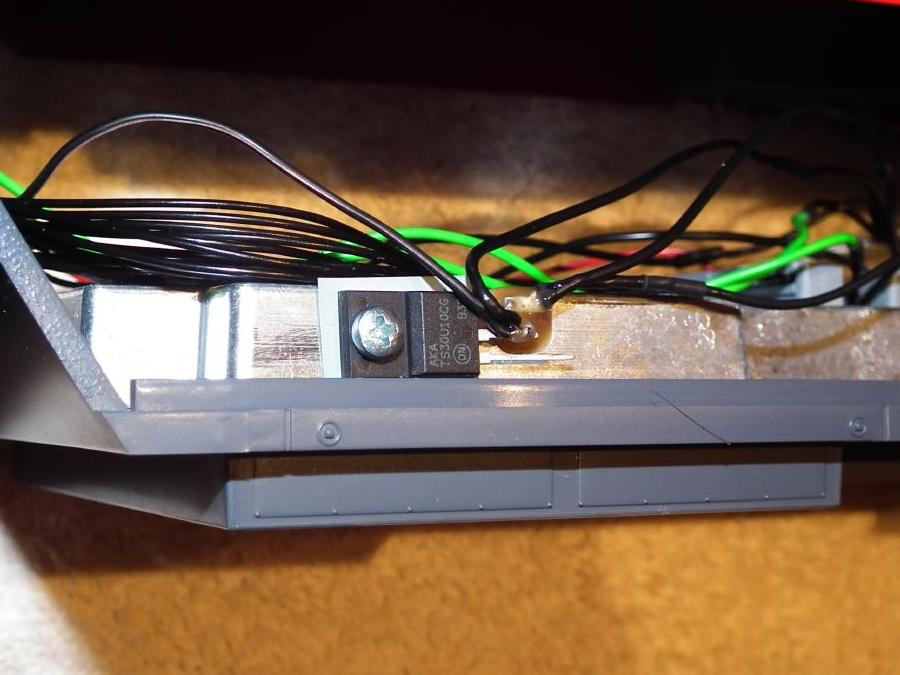
Schottky diodes inserted into both of the power supply lines (the inner ones on the black 4-pole STOKO plugs) of each the tractive units will take care of the train being powered by the tractive unit running in front only. This way operations on layouts featuring short powerless sections being too short for the long Allegra can be continued without track redesign, since the rear tractive unit won't feed power to the train any longer.
Ball bearing axles with power pickup
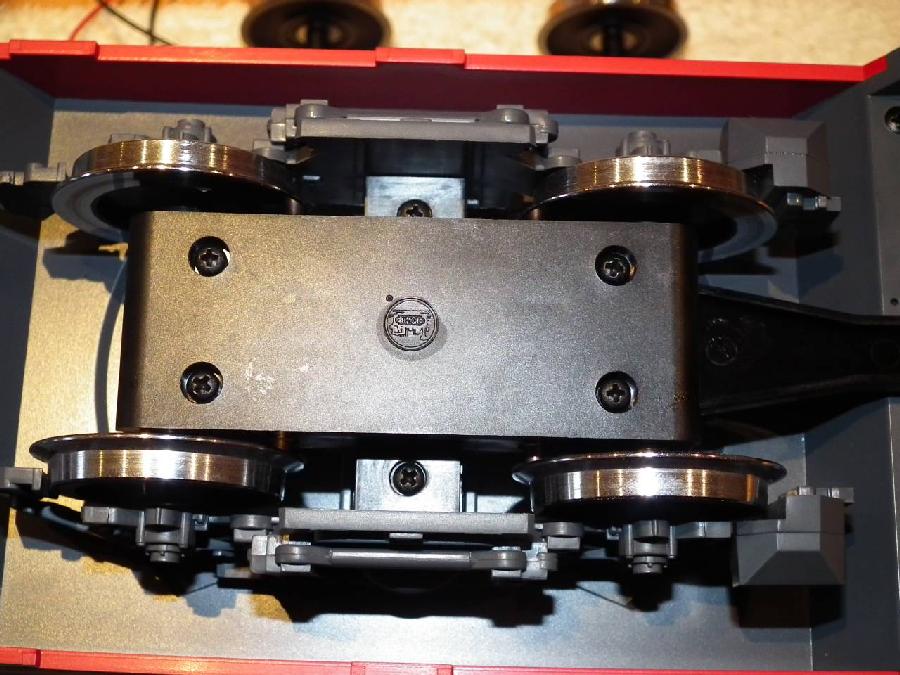
A tractive unit's motorless bogie with carbon brushes. The axles were replaced with Magnus ball bearing axles with power pickup (38mm diameter, without gudgeon pins!) in order to reduce the rolling resistance and to improve the power pickup.
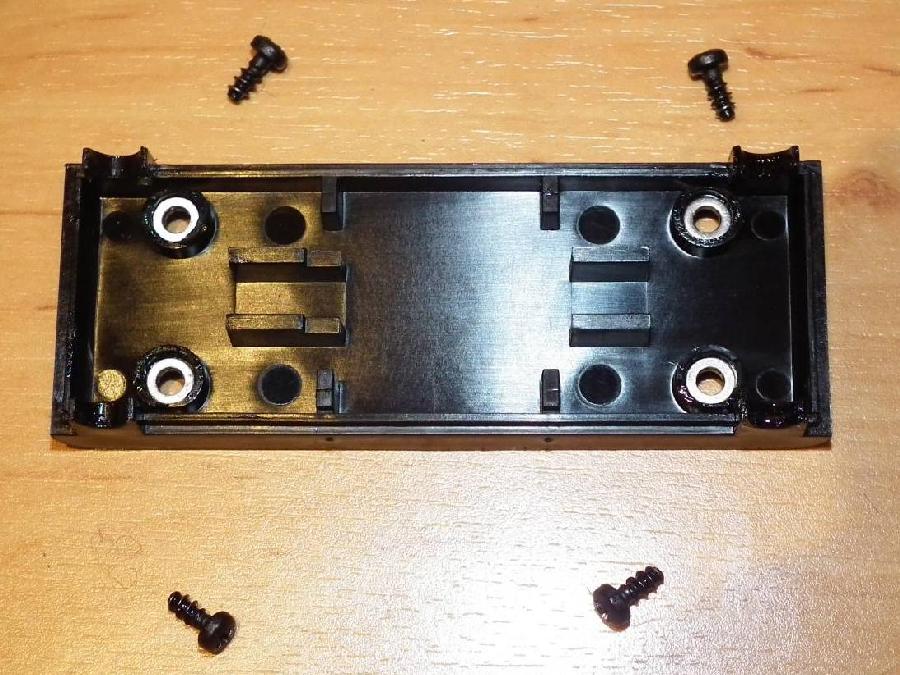
Keep an eye on the washers when disassembling the structure ! The parts won't match up any longer without the washers...
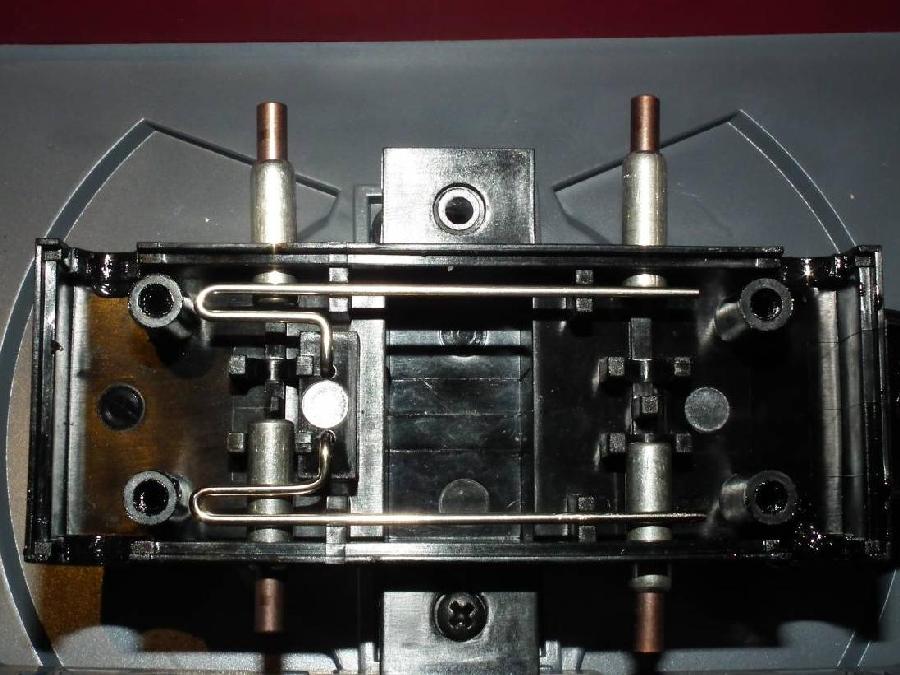
The carbon brushes can be pushed out after having removed the axles.
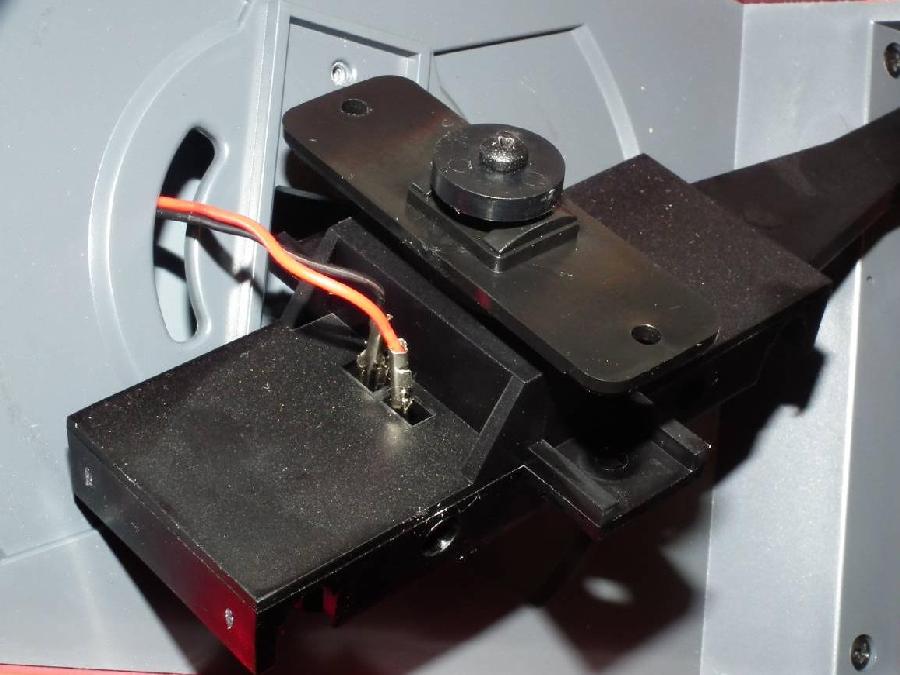
Having removed the axles' housing from the coach's bottom, ensure you'll remember the correct wiring before removing the cables.
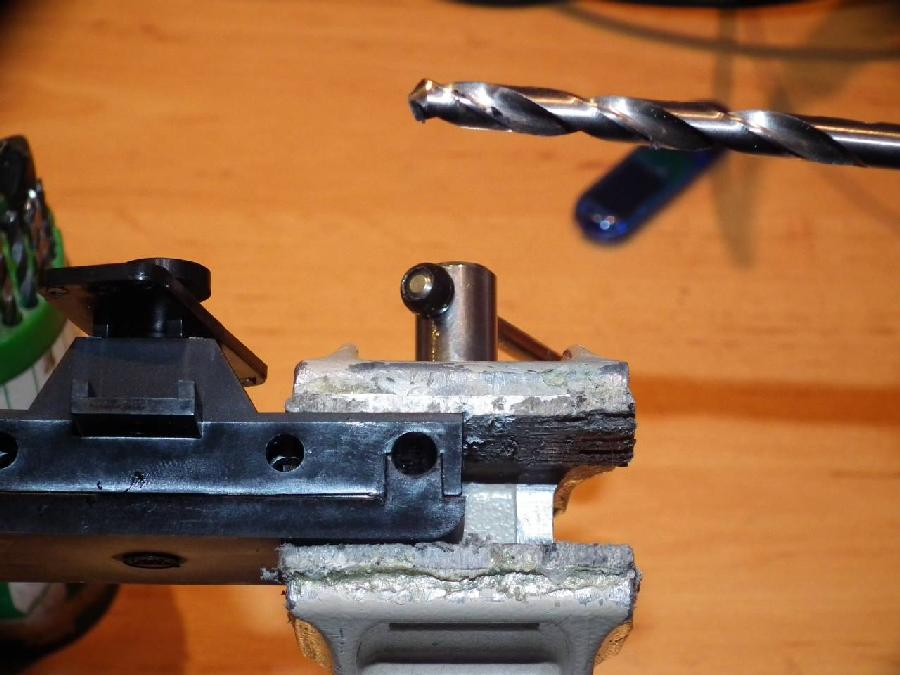
The axle mount wholes need to be rebored to a diameter of 6.5mm for the Magnus axles.
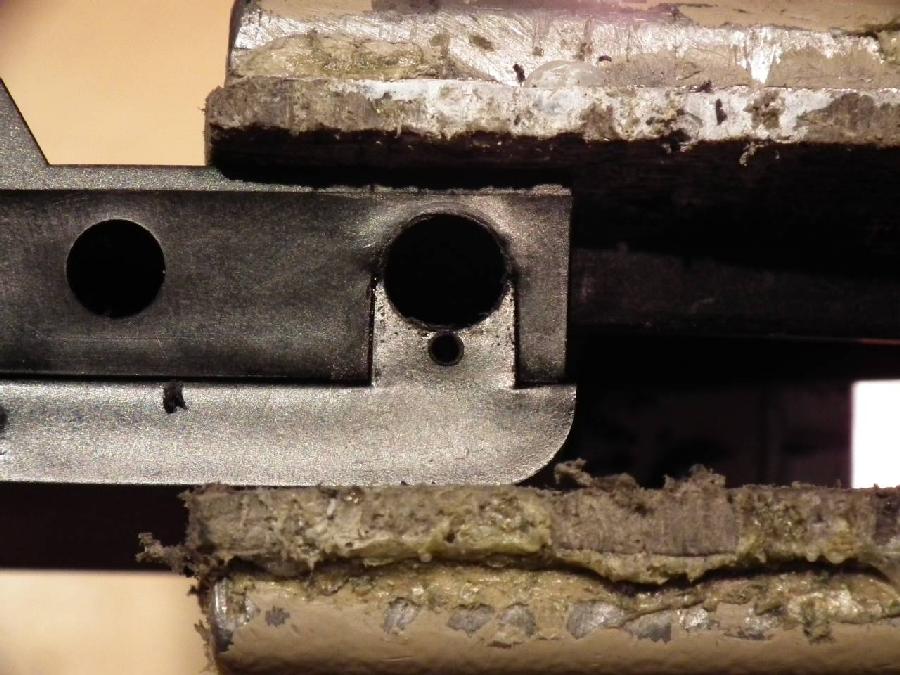
Furthermore, a grommet with a diameter of to 2mm is needed for the axles' cables.
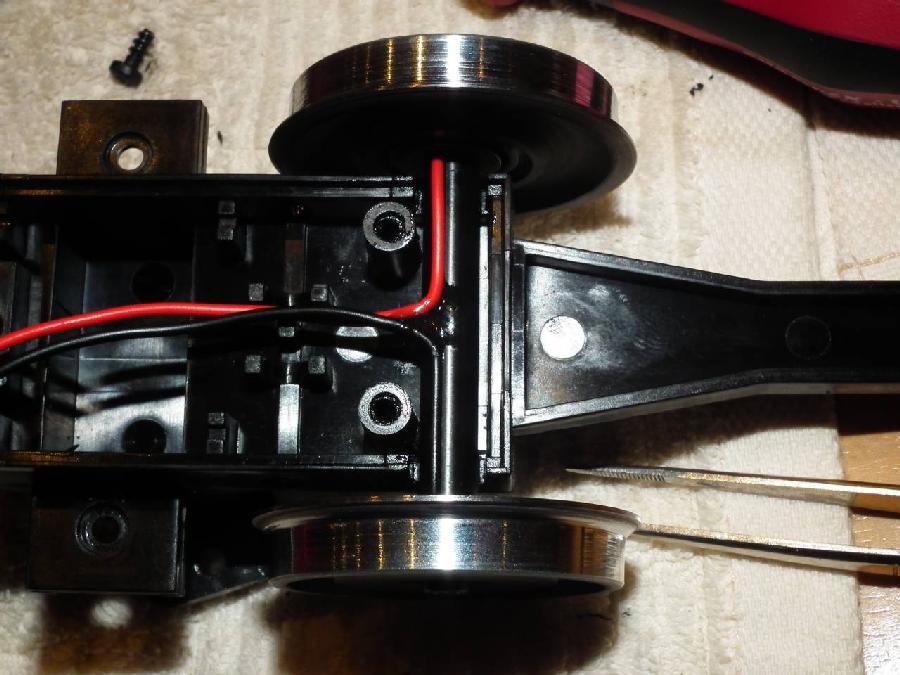
A first test shows that the axles required oscillation will work - but it needs to be limited.
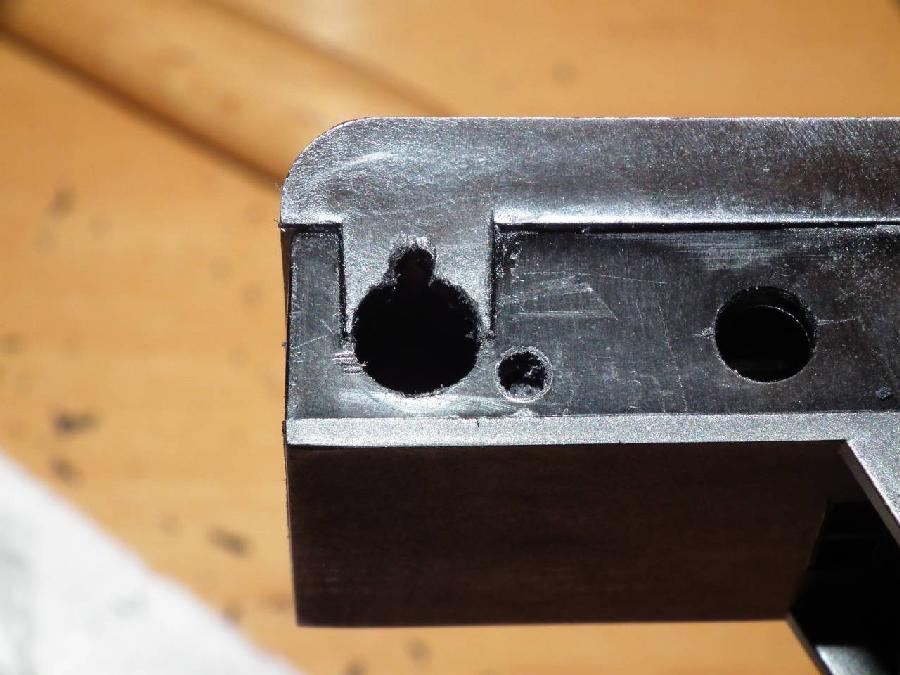
Limiting the oscillation is simple. Drill wholes with a diameter of 2.3mm and cut gears of 3mm.
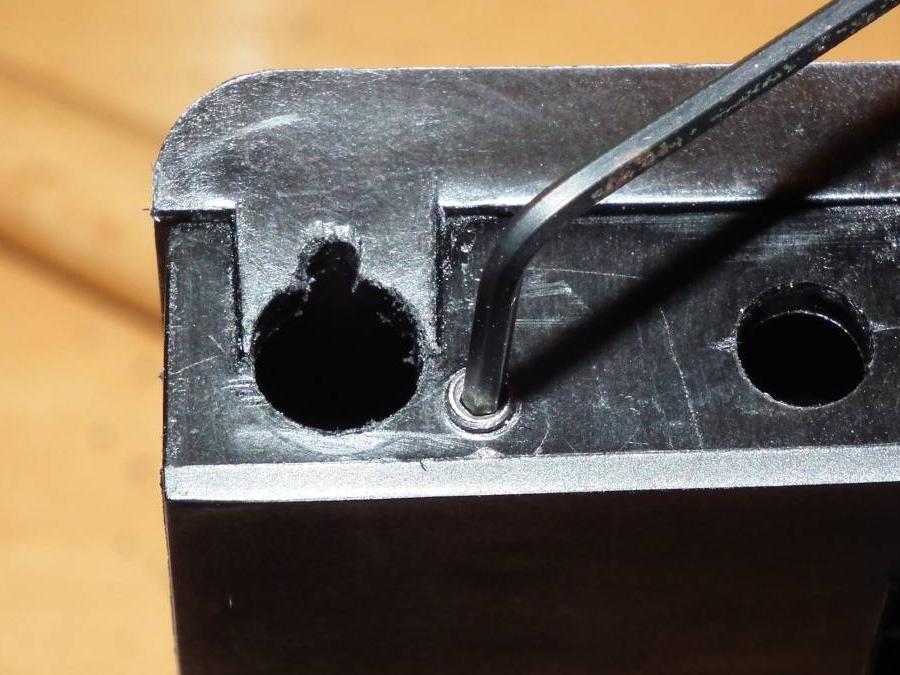
Insert a 3mm Allen head screw to adjust the axles' oscillating movement.
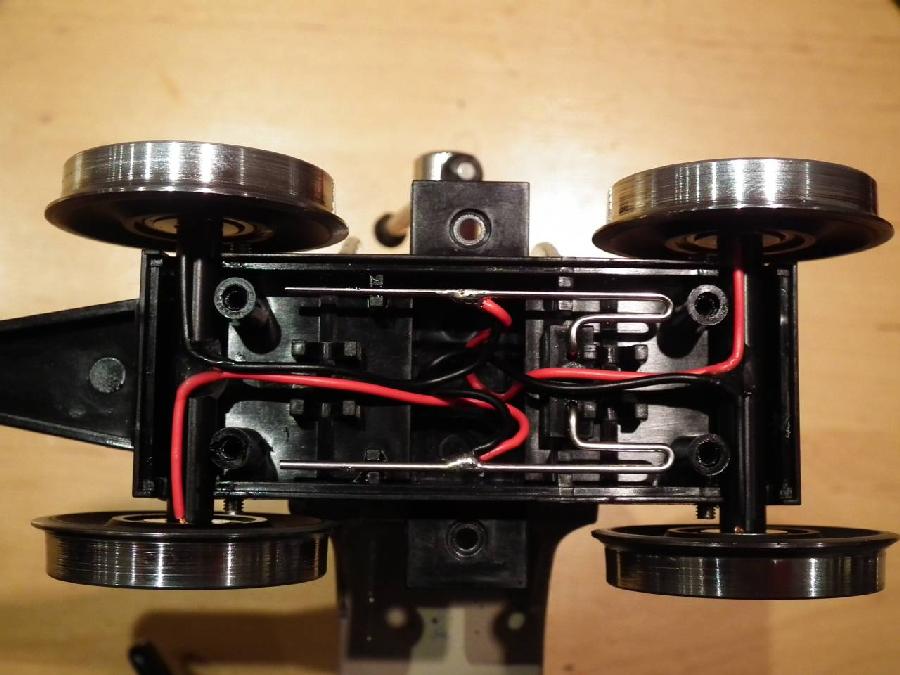
The bogie now being equipped with ball bearing axles. The cables were soldered to the original leads. The screws limiting the oscillating movement are clearly visible at the lower left and right.
Height mismatch between tractive units and middle car
Some tractive units suffer from a really ugly production fault resulting in the following effect:
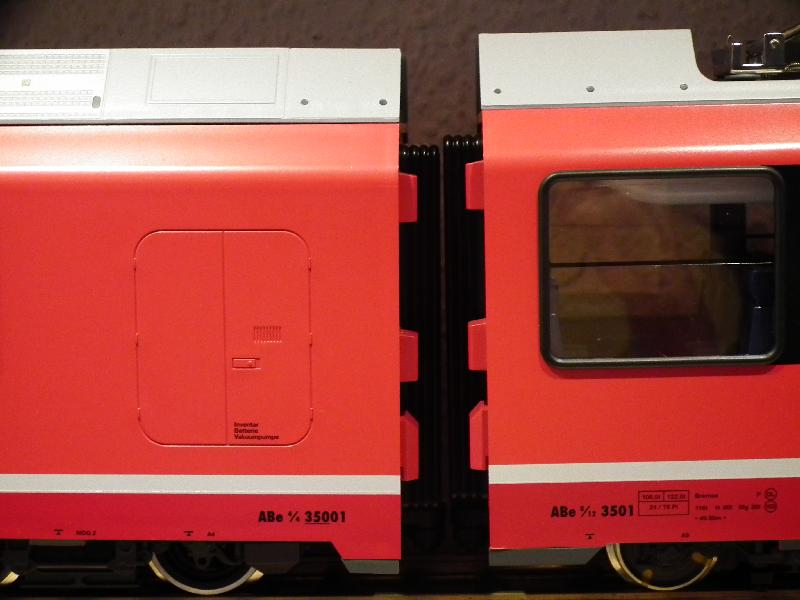
The height mismatch between the tractive unit and the middle car is caused by stay bolts being too short. These bolts are found on the inner floor and they determine the distance between the inner floor and the bottom plate. It seems there was a problem with filling the injection molds...

One of the bolts being too short. It is showing marks of a manual attempt to hide the problem.
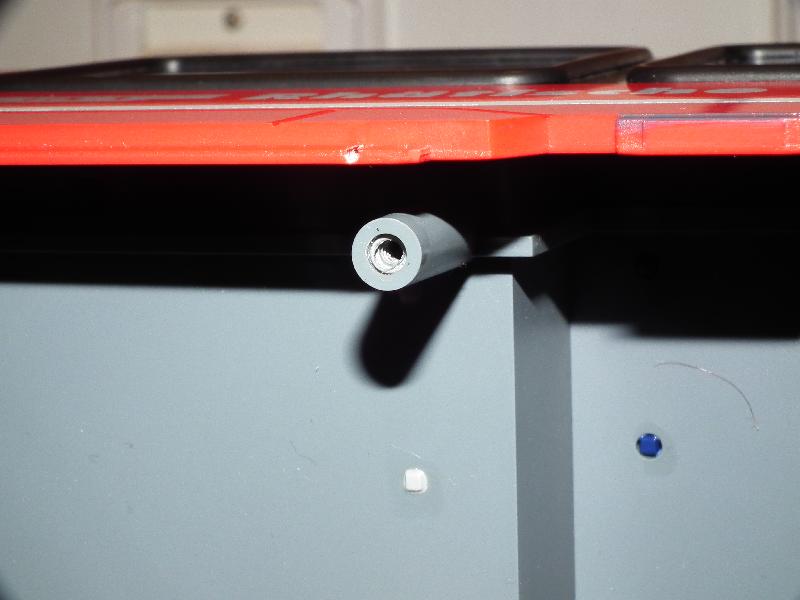
This is what a healthy bolt looks like.

The coaches bottom plate was thickened with a methacrylic glue in those places it is screwed to the above mentioned bolts to compensate the bolt's wrong length. The white polystyrene stripes (2mm thick) prevent the car's bottom plate from bowing. The stripes first were fixed using Ruderer L530, then reinforced with a methacrylic glue.
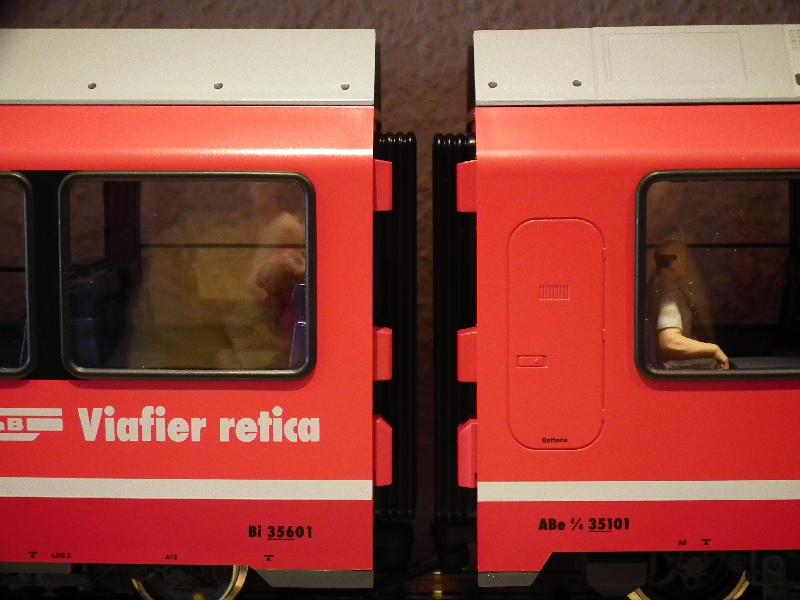
Successfully corrected production fault.

